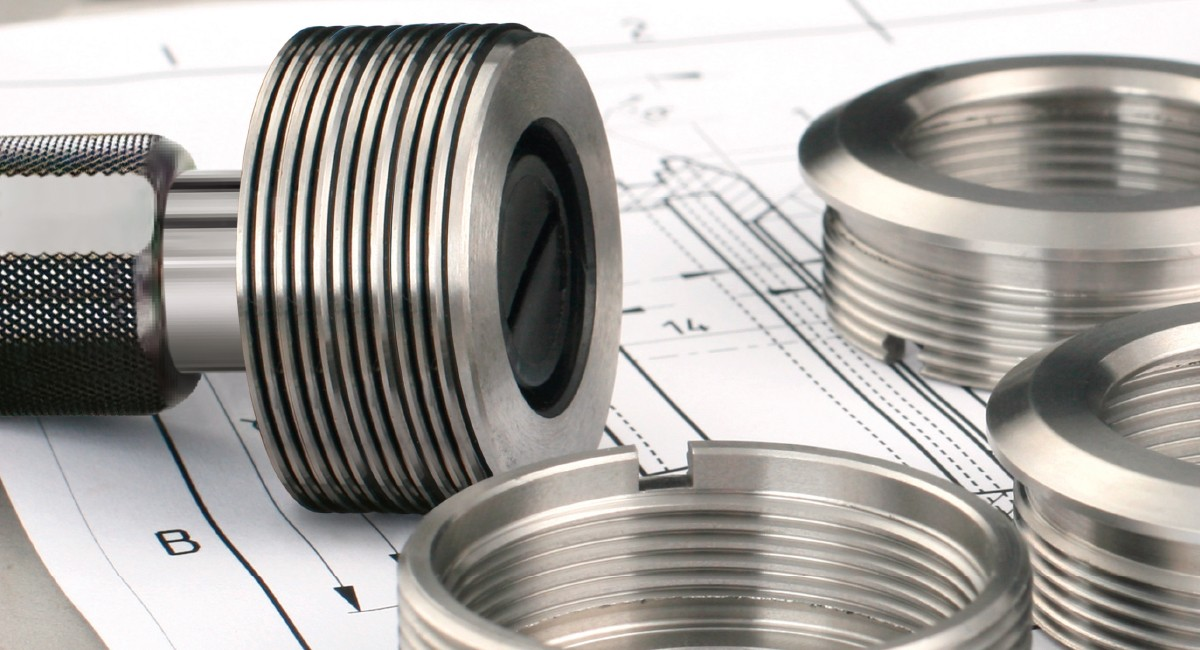The influence of heat treatment to threads measure Gauge test and the solution
Threads are an important and commonly used structural element. Threads are mainly used for structural connections, sealing connections, transmission, measurement, and support in various applications. They are used in a wide range of conditions, from normal usage to harsh conditions such as high temperature, high pressure, and severe corrosion.
There are generally two situations:
1. When measuring with thread gauges, one gauge doesn't fit while the other does. In this case, you should first check if you've mixed up the go and no-go ends of the thread gauge. Typically, the go end is thicker or longer, and the no-go end is thinner or shorter. Once you've confirmed that you haven't made a mistake, you need to explain the principles of using thread gauges to the customer.
2. When using two thread gauges of the same specification, but one passes while the other doesn't, there are generally two scenarios:
a. In the first scenario, the passing gauge has a hard time fitting. This is usually because one gauge's pitch diameter is at the upper limit, the other's is at the lower limit, and the product's pitch diameter is right in the middle.
b. In the second scenario, the gauge that passes does so more easily. This typically occurs when the external thread on the workpiece is oversized, and the internal thread is undersized. This is related to the principles of using thread plug gauges. The major diameter of thread gauges is smaller than the minor diameter, and in this situation, some thread gauges may have deeper threads, while others may have shallower ones. This results in a significant difference in the major diameter between the two gauges, causing the product's major diameter to become stuck. Similarly, thread plug gauges may have deep or shallow threads, leading to a significant difference in their minor diameter, and if the product's minor diameter is in the middle, it can get stuck.
The Disadvantages of Heat Treatment on Thread Gauges:
Insufficient Hardness: Insufficient hardness after quenching and tempering is generally due to inadequate heating during quenching, decarburization of the surface, or the presence of excessive retained austenite in high-carbon alloy steel. In oil quenching of CR-bearing steel, it's often observed that the surface hardness is lower than the inner layer, which is a reverse quenching phenomenon. This mainly occurs because, during the cooling process, the part spent a longer time in the vapor phase with a lower characteristic temperature, as the surface is protected by a vapor film, leading to longer austenite transformation periods compared to the center, thus making reverse quenching more likely.
Distortion and Quenching Cracks: Distortion of thread gauges during quenching is an inevitable phenomenon. It only becomes a reject if it exceeds specified tolerances or cannot be corrected. Proper material selection, improved design, and the rational choice of quenching, tempering methods, and standards can help reduce and control quenching distortion. Methods such as cold-hot straightening, hot-spot straightening, and stress relief heating can be used.
Cracks are irreparable quenching defects. They can only be prevented through proactive measures, such as reducing and controlling the distribution of quenching stresses, controlling raw material quality, and proper structural design.
Oxidation, Decarburization, Overheating: During the heating process of parts, if the surface is not protected, defects such as oxidation and decarburization occur. The consequences are reduced surface hardness, failure to meet technical requirements, the formation of a mesh of cracks on the part's surface, a significant decrease in part's appearance quality, increased surface roughness, and even out-of-specification parts. Therefore, heat treatment for precision machined parts should be conducted in a protective atmosphere or salt bath furnace, and for small batches, protective surface coatings can be used.
Overheating leads to the formation of coarse martensitic structures after quenching, causing quenching cracks or significantly reducing the impact toughness of quenched parts, making transgranular short cracks more likely to occur. Proper selection of quenching temperatures, shortening of soaking times, and strict temperature control can prevent overheating. In cases of overheated structures with sufficient machining allowance, re-annealing can be performed to refine the grain and re-quench.
Overburning often occurs in high-speed steel during quenching, characterized by the formation of a fishbone-like eutectic ledeburite structure. Over-burning results in severe brittleness and renders the quenched steel unusable.
Key words:heat treatment, gauges, threaded fasteners, threads

 English
English  Español
Español  Português
Português  русский
русский  Français
Français  日本語
日本語  Deutsch
Deutsch  tiếng Việt
tiếng Việt  Italiano
Italiano  Nederlands
Nederlands  ภาษาไทย
ภาษาไทย  Polski
Polski  한국어
한국어  Svenska
Svenska  magyar
magyar  Malay
Malay  বাংলা ভাষার
বাংলা ভাষার  Dansk
Dansk  Suomi
Suomi  हिन्दी
हिन्दी  Pilipino
Pilipino  Türkçe
Türkçe  Gaeilge
Gaeilge  العربية
العربية  Indonesia
Indonesia  Norsk
Norsk  تمل
تمل  český
český  ελληνικά
ελληνικά  український
український  Javanese
Javanese  فارسی
فارسی  தமிழ்
தமிழ்  తెలుగు
తెలుగు  नेपाली
नेपाली  Burmese
Burmese  български
български  ລາວ
ລາວ  Latine
Latine  Қазақша
Қазақша  Euskal
Euskal  Azərbaycan
Azərbaycan  Slovenský jazyk
Slovenský jazyk  Македонски
Македонски  Lietuvos
Lietuvos  Eesti Keel
Eesti Keel  Română
Română  Slovenski
Slovenski  मराठी
मराठी  Srpski језик
Srpski језик 


